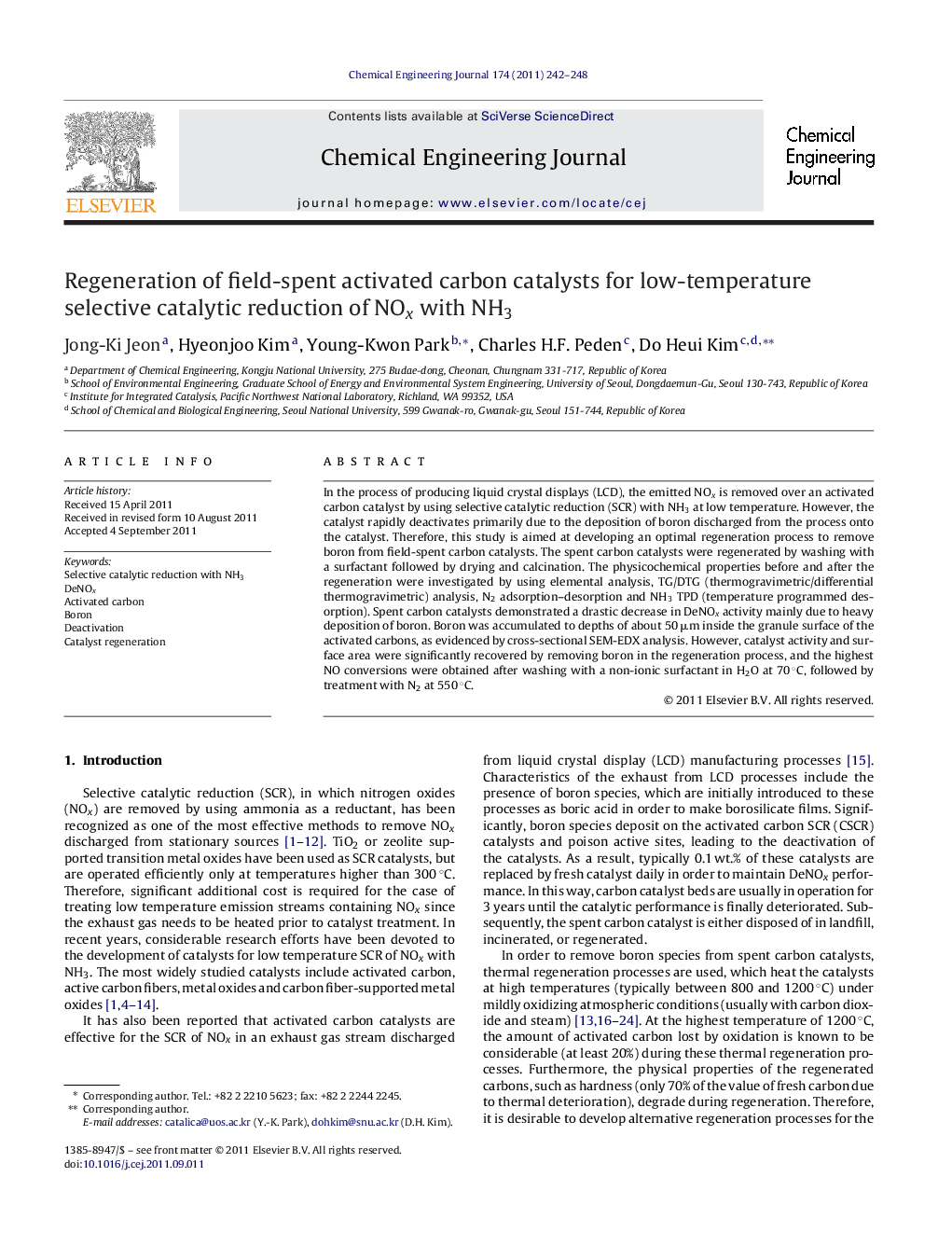| Article ID | Journal | Published Year | Pages | File Type |
|---|---|---|---|---|
| 150528 | Chemical Engineering Journal | 2011 | 7 Pages |
In the process of producing liquid crystal displays (LCD), the emitted NOx is removed over an activated carbon catalyst by using selective catalytic reduction (SCR) with NH3 at low temperature. However, the catalyst rapidly deactivates primarily due to the deposition of boron discharged from the process onto the catalyst. Therefore, this study is aimed at developing an optimal regeneration process to remove boron from field-spent carbon catalysts. The spent carbon catalysts were regenerated by washing with a surfactant followed by drying and calcination. The physicochemical properties before and after the regeneration were investigated by using elemental analysis, TG/DTG (thermogravimetric/differential thermogravimetric) analysis, N2 adsorption–desorption and NH3 TPD (temperature programmed desorption). Spent carbon catalysts demonstrated a drastic decrease in DeNOx activity mainly due to heavy deposition of boron. Boron was accumulated to depths of about 50 μm inside the granule surface of the activated carbons, as evidenced by cross-sectional SEM-EDX analysis. However, catalyst activity and surface area were significantly recovered by removing boron in the regeneration process, and the highest NO conversions were obtained after washing with a non-ionic surfactant in H2O at 70 °C, followed by treatment with N2 at 550 °C.
► The regeneration of spent DeNOx activated carbon for LCD production was attempted. ► This study aims to develop an optimal regeneration process to remove boron. ► SEM-EDX was employed to study the distribution of metals in the field-spent carbon.
